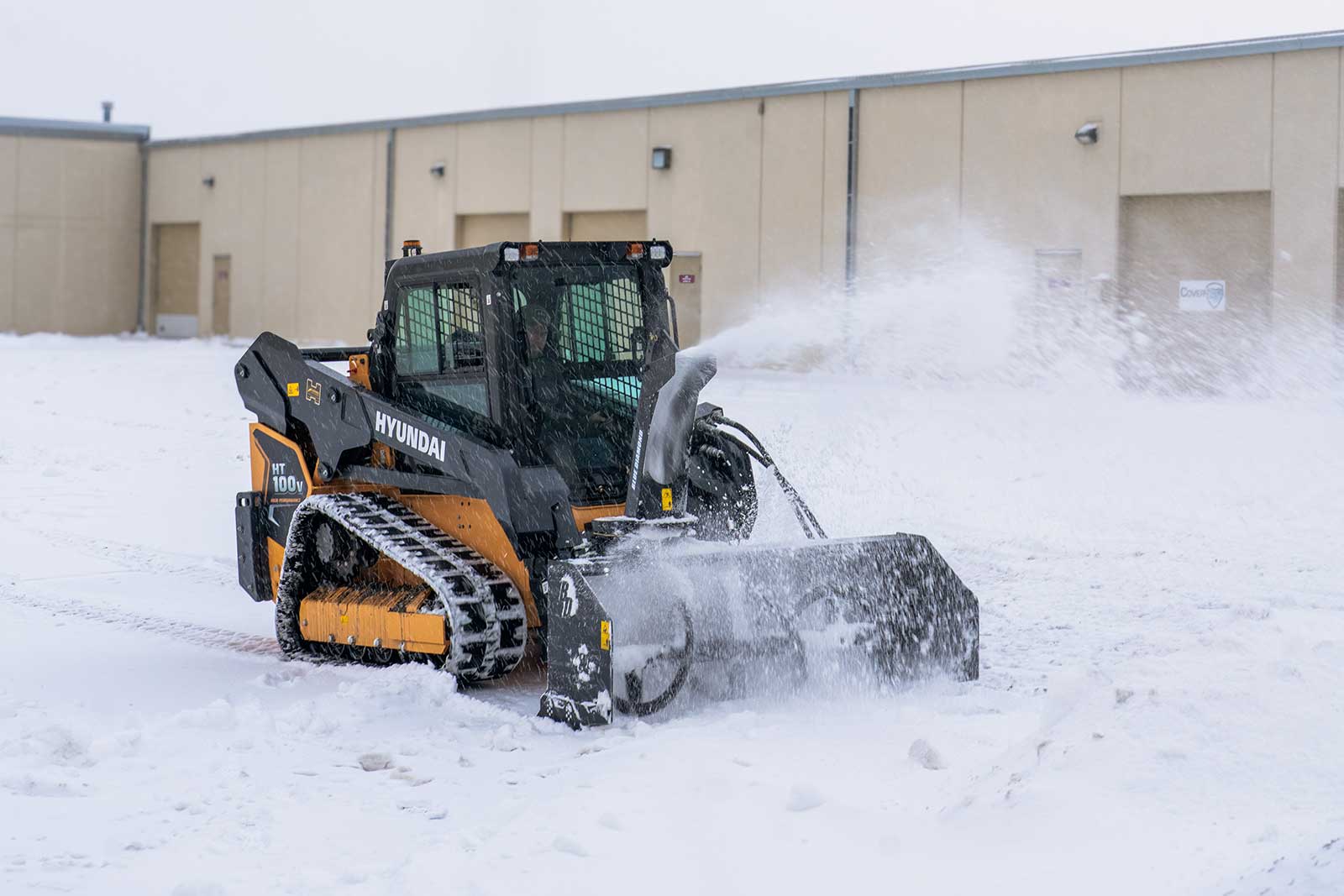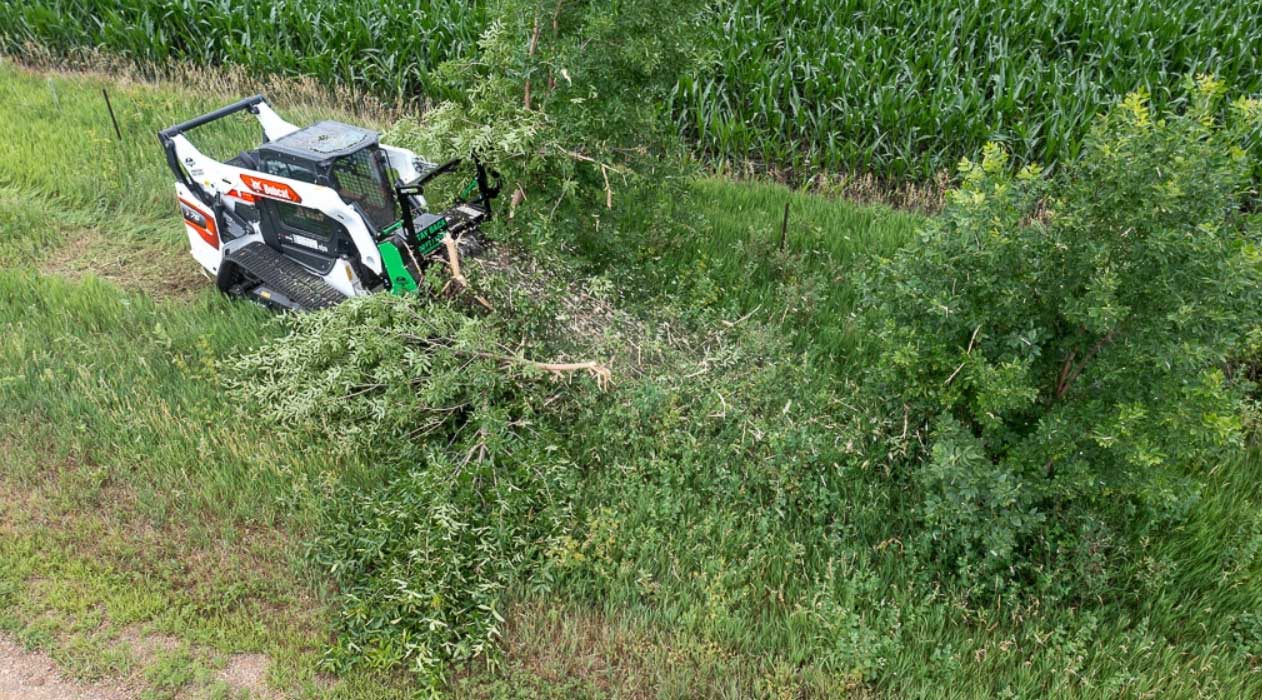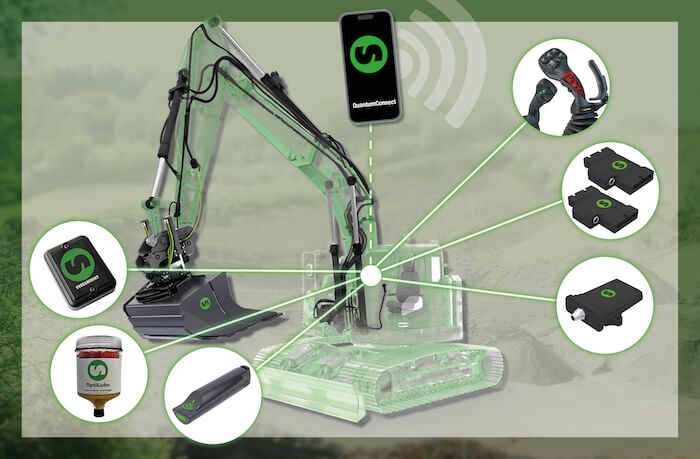Deft Excavator: Tiltrotators Allow an Attachment to Tilt and Twirl, Saving Time and Increasing Flexibility
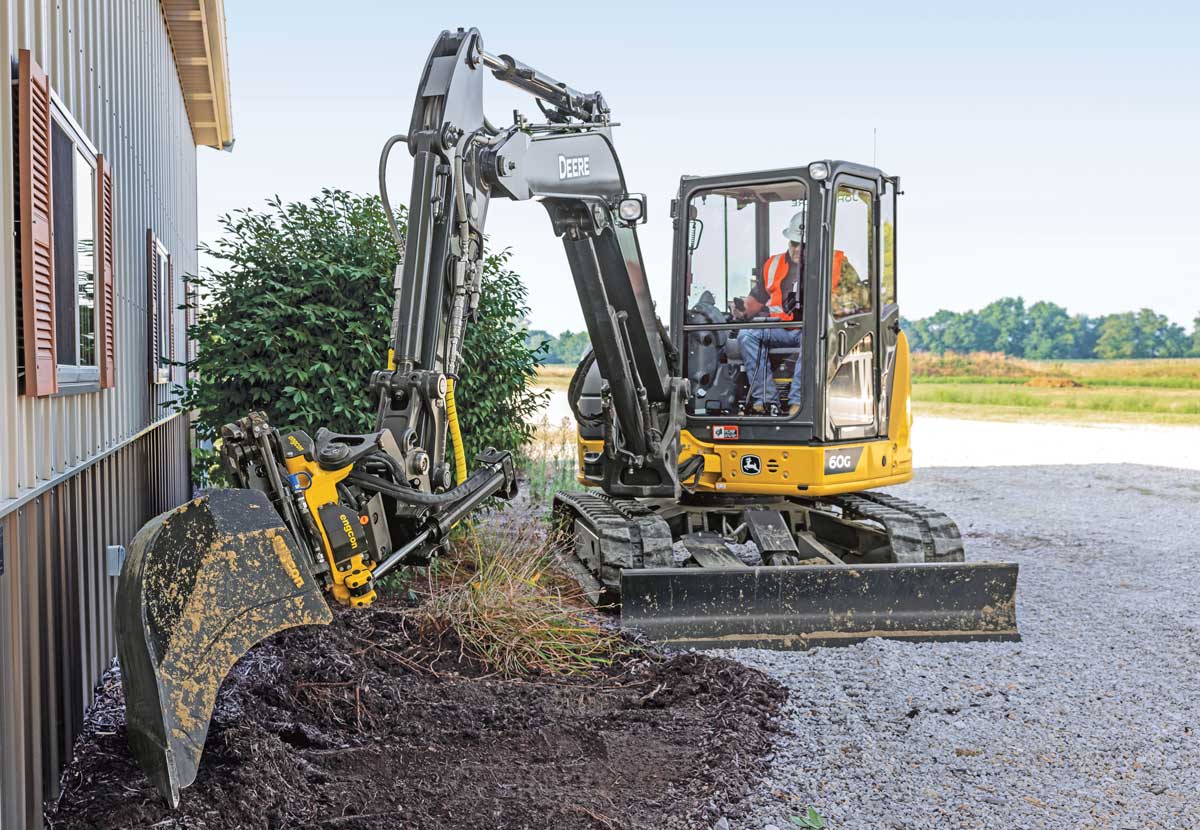
Tiltrotators give excavators dexterity. These coupler systems attach to the end of the boom and allow an excavator’s attachment to twirl 360 degrees or tilt to odd angles for exacting excavation or implement work. Over the last couple of years, tiltrotator systems have not only been growing in popularity in America (they are big in Europe), but they also have been shrinking in size to fit on compact excavators. These systems add awesome maneuverability to your attachment, but they do initially present a learning curve in order to use them efficiently.
“However, with a little practice, you can become proficient in no time,” says Lee Padgett, Takeuchi product manager. “There are so many advantages once you do learn how to use a tiltrotator correctly. Its ability to tilt 50 degrees right and left as well as rotating 360 degrees allows the operator to work in any direction without having to reposition the machine.”
A tiltrotator-equipped excavator offers enhanced value for customers, especially those working in tight, challenging jobsites or tackling applications that require precision and versatility such as site development, underground work, landscaping and grade control operations. Versatility and saving time are the tiltrotator’s biggest advantages.

“A traditional excavator boom, arm and bucket is like using your arm and hand without a wrist,” says Justin Steger, product solutions manager at John Deere Construction and Forestry. “The additional degrees of freedom from tilting and rotating your bucket or attachment boosts productivity and versatility when backfilling and grading.”
Tiltrotator attachment plates give excavator operators flexibility and accuracy, saving fuel in the process. They are also big time-savers on all types of jobs — except when bulk-moving dirt or digging a hole or trench without precision. Let’s learn a little about the market.
Business is Booming
Offshore manufacturers making and dealing with tiltrotators are seeing growth and demand while extending their presence in the United States. OilQuick is expanding its office and production facilities in Sweden, growing in Europe and now has a footprint in the United States through a production plant — OilQuick Americas. Nordic-based companies such as Rototilt and engcon are posting large sales numbers and engaging in American partnerships. Rototilt had a record year in 2021 and is recruiting to increase capacity to meet high demands. “We have developed our offering during the year by establishing the brand on new export markets,” says Per Väppling, sales and marketing manager. “The fact that more people are opting for Rototilt’s solutions is a result of us continually developing our offering of tiltrotator systems.”
Attachment Amplifier
Tiltrotator tech sounds pretty next generation, but it’s not new. It was developed 40 years ago in Scandinavia, but it continues to be refined today and is slowly carving out market share in the United States. Brands like engcon and Rototilt (both based in Sweden) have been making these systems for years, and they have also made interesting alliances with American equipment brands. For instance, engcon has a partnership with John Deere, Kinshofer NOX supplies Takeuchi and Rototilt works with Caterpillar on its product line. Regardless of brand, these flexible wrist coupling systems make buckets, forks, grapples and other attachments more versatile. The grading bucket is the most common attachment, notes Daniel Cohen, Caterpillar product application specialist.
“The grading buckets have a wide opening and a long floor that give a stable base for fine grading,” he says. “They also taper towards the rear to allow the bucket to rotate around objects without hitting them.” The second most common attachment is a grapple, continues Cohen: “Many operators use the grapples to pick and place pipes and poles for utility work or stack and sort wood in land clearing applications.”
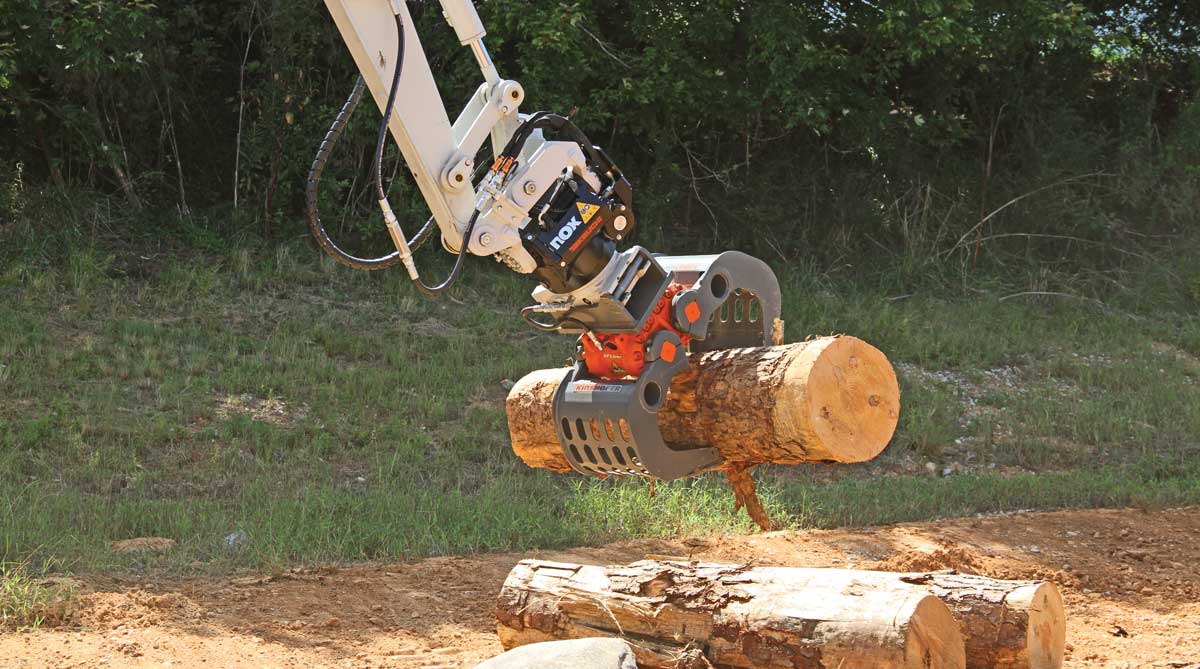
Tiltrotators also can be fitted with forks, compaction wheels, grade beams and hydraulic compaction equipment, allowing operators to get a lot more done with just one machine on the jobsite. Of course, they don’t work with everything. “Tiltrotators are not compatible with hydraulic thumbs,” Steger notes “But [some] tiltrotators offer an integrated grab on the back that replaces the need for a thumb.”
Rototilt offers such grapple modules, which remain fastened to the lower coupler of the tiltrotator, says Nadine Devereux, Rototilt marketing coordinator. “In addition, we offer bypass-style multi-grapples, stone and sorting grapples,” she adds. While operators generally need a week or two to get used to using a tiltrotator, notes Devereux, after they do, “they can’t imagine working without one.” Rototilt easily offers one of the widest selections of tiltrotators in the industry with eight different units from the R1 through the R8.
A tiltrotator and a safety quick-coupler system are often used together. OilQuick tiltrotator Series OQTR-E is currently not available in the NA market but will be launched in a near future, says Jocke Bohlin, OilQuick company spokesperson. OQTR-E tiltrotators are based on engcon’s rotor body and OilQuick’s couplers. Those who invest in a OilQuick tiltrotator system almost always match it with a fully automatic hydraulic quick-coupler above and below the tiltrotator, known as the “sandwich solution,” says Bohlin.
“With the quick-couplers, you can stay in the cab and switch hydraulic, electric and mechanical attachments without getting out of the cab,” he adds. “You can also choose to detach the tiltrotator if you do not need it and go with a bucket alone. For the tiltrotator on a new machine, we estimate a couple of days to install and set up.”
Tiltrotator installation depends on many factors. “We have bolted adapter plates, welded adapters, pending adapters and we make customer adaptation for every case,” says Bohlin, quickly noting: “A large hammer under the tiltrotator all day long is not recommended. You can detach the tiltrotator and save it from wear and tear.”
Tiltrotator Training
Cognizant of tiltrotators’ complexity and cost, manufacturers offer training to help contractors hit the ground running. Caterpillar features videos on the Cat Landscaping and Construction YouTube channel. John Deere dealers are able to assist with setting up demonstrations. Rototilt product support representatives attend every new installation and provide dealer and operator training combined with the fully functional and easily navigable display unit installed in the machine’s cab. While the company’s experience has been that no training is needed, OilQuick offers installation, support and training and at the moment of installation, “we can help with a crash course,” Bohlin says. Takeuchi product managers train dealer salespeople and technicians about the proper use and maintenance of tiltrotators so that they can in turn assist machine owners and operators in their sales territories.
Controls to Grade Control
A tiltrotator system may come with another set of joysticks, engineered with lots more buttons, toggles and complexity. Cohen notes that while becoming proficient operating the different tiltrotator functions can be a challenge, “the joystick controls are intuitive and after a little time, operators get comfortable and really enjoy it.” Caterpillar offers its Tilt Rotate System (TRS). Cat has released the TRS6 for its 5- and 6-metric-ton units and the TRS8 for its 7- to 10-metric-ton units. Coming soon, Cat will release the TRS4 for its 2- and 4-metric-ton models.
“When using a TRS, there is less need to constantly move the machine around,” notes Cohen. “The TRS fine control allows operators to do more finish work. This eliminates some of the shovel and rake cleanup work and frees up manpower to complete other tasks.”
Just remember: When digging and trenching, you usually want the most breakout force and the least amount of weight possible on the end of the arm. In that instance, drop the tiltrotator off and pick up your bucket. Once you’re done digging, just reconnect to the tiltrotator and continue working with precision.

Some tiltrotators can also be matched with grade control or machine control systems. The Cat TRS comes with sensors that allow it to be compatible with a grade control system and increase overall capabilities. John Deere doesn’t offer machine control on its compact excavators, but the systems will accept aftermarket technology. An OilQuick tiltrotator can be matched with the Volvo Dig Assist System to enable easy communication, says Bohlin, adding that similar pairings can be done with Leica or Trimble systems or any other brand on the market. Rototilt tiltrotators are compatible with all major grade control and machine control systems. Takeuchi’s Pro Plus tiltrotator model can integrate with several of the major grading control manufacturers.
Depending on the carrier size, installations can vary from six to 20 hours, says Devereux. Installation of a Cat TRS on a next-generation Cat mini excavator takes four to six hours. “The TRS uses the existing machine display and machine ECM, so all of the brains are already there,” Cohen says. “The wiring plugs into existing machine connections, and the TRS joysticks are an easy bolt in.” John Deere’s machine installations take one to two days due to the hydraulic and electrical components involved, notes Steger. Takeuchi’s DF4 tiltrotator model can be installed in less than a day. The more robust Pro Plus model can take as many as two to three days to install, says Padgett.
“Both perform five functions: tilt, rotate, coupler and dual auxiliary circuits,” he adds. “However, they’re controlled in different ways.”
The Pro Plus only uses one auxiliary hydraulic circuit to toggle between functions without a separate control box. Pro Plus includes two customizable joystick controls, allowing the operator to select placement of button function and operate all five functions simultaneously. The DF4 tiltrotator model utilizes the two standard factory auxiliary hydraulic circuits to operate the same five functions as the Pro Plus unit.
Clearly, there are a lot of options and brands on the market today, and it’s not just aftermarket brands, but the excavator manufacturers that are integrating tiltrotators at a factory level. Like any piece of equipment, proper configuration, having the necessary components and understanding available options generate the best results. Just be prepared for a little bit of a learning curve — when renting, buying and operating.
“It takes some seat time for operators to become proficient and take advantage of all these new operating techniques,” says Cohen. “But once they do, they’ll note increased productivity.”
Carol Brzozowski is a freelance writer for Compact Equipment.

